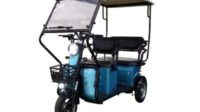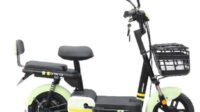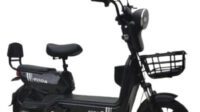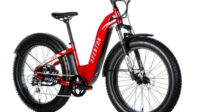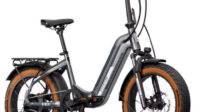
Cycling to work has gained immense popularity in recent years, and for good reason. It offers a multitude of benefits, including cost savings, physical fitness, and environmental friendliness. But when it comes to choosing the right bike for your daily commute, you might find yourself at a crossroads.
Should you opt for a classic manual bike or embrace the assistance of a more powerful electric bike (e-bike)?
In this article, we will explore the pros and cons of both options and provide you with valuable insights to help you make an informed decision.
Reasons to Cycle to Work
Before diving into the e-bike vs. manual bike debate, let’s establish why cycling to work is an excellent choice. Here are five compelling reasons:
- Exercise on the Go: Commuting by bike allows you to incorporate physical activity into your daily routine effortlessly. It’s a fantastic way to stay fit without dedicating extra time for workouts. For enthusiastic cyclists, you can even add extra miles or interval training to your commute.
- Efficient in Traffic: In the midst of rush-hour traffic, a bike can often be the quickest way to navigate a city. This means more time for a leisurely breakfast or other morning rituals.
- Cost Savings: Over time, cycling can significantly reduce your commuting costs compared to public transport or owning a car. Additionally, it may lead to cost savings on vehicle maintenance and fuel if you have a car.
- Reliability: Unlike public transport, cycling isn’t subject to strikes, delays, or roadworks. You’ll enjoy consistent, reliable transportation with minimal disruptions to your daily schedule.
- Well-Being: A bike commute contributes to both your mental and physical well-being. Studies have shown that an active commute can enhance your overall health and happiness, while also benefiting the environment.
E-Bike vs. Manual Bike: The Commuter’s Dilemma
Now, let’s delve into the core debate: should you opt for an e-bike or stick with a traditional manual bike for your daily commute? We’ll assess both options based on key criteria and real-world scenarios.
E-Bike: A Powerful Ally for Your Commute
E-bikes offer electric assistance that can be a game-changer for many commuters, especially when facing challenges like steep hills or long distances. Here’s why an e-bike might be the right choice for you:
- Speed and Efficiency: E-bikes provide quick acceleration and can maintain higher speeds with less effort, making them an excellent choice for urban commutes. With an electric boost, you can effortlessly navigate through traffic, saving you precious minutes every day.
- Cost-Efficient: Over time, an e-bike can be more cost-effective than traditional commuting options, such as public transport or owning a car. You’ll reduce yearly mileage on your car, potentially lowering maintenance costs.
- Hill-Friendly: Tackling steep hills is a breeze with an e-bike. The electric motor provides significant assistance, eliminating the sweat and fatigue you might experience on a manual bike.
- Reliability and Independence: E-bike commuters are less affected by strikes, roadworks, or public transport delays. You have the freedom to ride at your own pace, independently reaching your destination, regardless of external factors.
- Additional Features: E-bikes often come with useful features like mudguards, lights, and cargo racks, enhancing your commuting experience. They can make your journey more comfortable and practical, no matter the weather conditions.
- Environmental Benefits: Using an e-bike is an eco-friendly choice, reducing your carbon footprint and contributing to cleaner air and reduced traffic congestion.
Manual Bike: Pedal-Powered Simplicity
Manual bikes are timeless, efficient, and a cost-effective way to commute. They might be the right choice for you if you prefer the simplicity of a traditional bike and have a relatively flat commute. Here’s why a manual bike is worth considering:
- Physical Activity: If your daily commute is relatively short and flat, a manual bike can provide you with a good workout. You’ll enjoy the benefits of staying active and maintaining your fitness.
- Budget-Friendly: Manual bikes are typically more affordable than e-bikes. If you’re on a tight budget or don’t require electric assistance, a manual bike could be the perfect choice for you.
- Training Opportunity: Some cyclists use their daily commutes as a form of training. If you enjoy testing your legs and tackling hills, a manual bike can provide a more rigorous workout.
- Simplicity: Manual bikes are straightforward, with no electric components. You won’t need to worry about charging batteries or motor maintenance.
- Eco-Friendly: While e-bikes are eco-friendly, manual bikes have an even smaller carbon footprint since they don’t require electricity.
Real-Life Commuting Test
To provide you with a practical comparison, we conducted a real-life commuting test on both e-bikes and manual bikes. Our test covered two different routes: a shorter, more direct route and a longer but flatter scenic route.
The Direct Route:
- Distance: 8 kilometers
- Route: Direct, but includes a steep hill
The Scenic Route:
- Distance: 12 kilometers
- Route: Scenic canal path with no hills
Our test aimed to showcase the performance of both bike types in various scenarios. We equipped the e-bikes with heart rate monitors to measure the physical effort required on each route. Here’s what we found:
- On the direct route, the e-bikes proved to be the fastest and least physically demanding option, effortlessly conquering the steep hill.
- The scenic route, while longer, posed no challenge for the e-bikes. Their electric assistance ensured a comfortable and leisurely ride.
- Manual bikes required more physical effort on both routes. They were ideal for flat commutes but required additional leg power to tackle steep hills.
Consider Your Commute
Ultimately, the choice between an e-bike and a manual bike depends on your specific commute and personal preferences. Consider the following factors when making your decision:
- Terrain: If your commute involves steep hills or challenging terrain, an e-bike can make the journey easier and more enjoyable.
- Distance: For longer commutes, especially those exceeding 10 kilometers, an e-bike’s electric assistance can save you time and energy.
- Budget: Determine your budget for a bike. While e-bikes offer various advantages, manual bikes are more budget-friendly.
- Fitness Goals: If you view your daily commute as an opportunity to stay active and maintain your fitness, a manual bike might be the right choice.
- Environmental Impact: Both e-bikes and manual bikes are environmentally friendly, but e-bikes might have a slightly larger carbon footprint due to their electric components.
In conclusion, the decision between an e-bike and a manual bike should align with your commute’s demands and your personal preferences.
Both options have their unique advantages, so choose the one that best suits your lifestyle and enhances your daily journey.
Whichever bike you select, you’re taking a step towards a healthier, more cost-effective, and eco-friendly commute.
- 12 Kata-Kata Bijak Pentingnya Komunikasi yang Baik, Tiket Menuju Sukses – November 15, 2023
- 35 Quotes tentang Public Speaking yang Menginspirasi – November 15, 2023
- Review Sepeda Listrik Uwinfly Dragonfly 7 (DF7) – November 14, 2023


